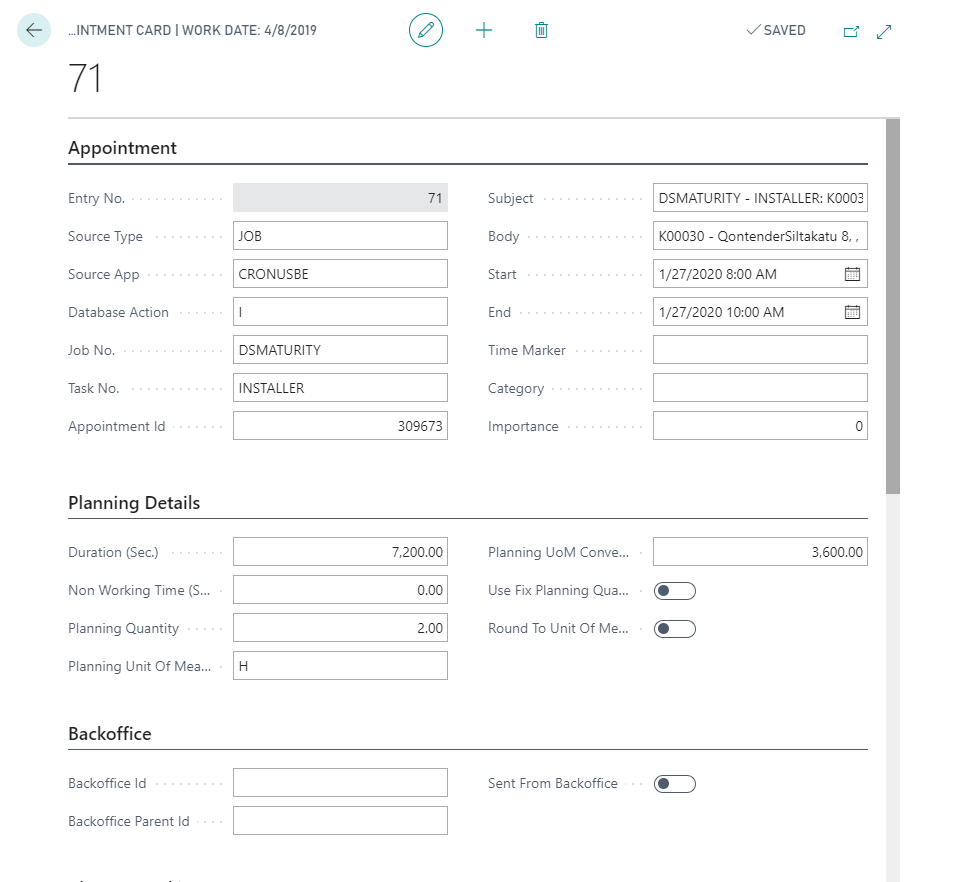Appointment Card
Appointments in the list can be opened in the appointment card, which reveals more information about the appointment:

Fields
The following - grouped - fields are shown in the appointment card:
| Group | Field |
|---|---|
| Appointment | Entry Number |
| Appointment | Source Type |
| Appointment | Source App |
| Appointment | Database Action |
| Appointment | Job No |
| Appointment | Task No |
| Appointment | Appointment ID |
| Appointment | Subject |
| Appointment | Body |
| Appointment | Start Date |
| Appointment | End Date |
| Appointment | Time Marker |
| Appointment | Category |
| Appointment | Importance |
| Appointment | Is All Day Event |
| Planning Details | Duration (Sec.) |
| Planning Details | Non Working Time (Sec.) |
| Planning Details | Planning Quantity |
| Planning Details | Planning Unit Of Measure |
| Planning Details | Planning UoM Conversion |
| Planning Details | Use Fix Planning Quantity |
| Planning Details | Round to Unit Of Measure |
| Back Office | Back Office Id |
| Back Office | Back Office Parent Id |
| Back Office | Sent from Back Office |
| Change Tracking | Last Modified Date |
| Change Tracking | Last Modified User |
| Change Tracking | Created Date |
| Change Tracking | Created user |
Furthermore, a subgrid shows all the resources that have been assigned to the appointment. Similarly, another subgrid links to the field values that have been assigned to the appointment.
It is essentially the same information that you get to see in the appointment card in Dime.Scheduler.